21 巻, 5 号
選択された号の論文の7件中1~7を表示しています
- |<
- <
- 1
- >
- >|
ORIGINAL
-
原稿種別: Original Article
専門分野: none
2002 年21 巻5 号 p. 215-222
発行日: 2002年
公開日: 2002/12/01
PDF形式でダウンロード (281K) -
原稿種別: Original Article
専門分野: none
2002 年21 巻5 号 p. 223-227
発行日: 2002年
公開日: 2002/12/01
PDF形式でダウンロード (45K) -
原稿種別: Original Article
専門分野: none
2002 年21 巻5 号 p. 229-234
発行日: 2002年
公開日: 2002/12/01
PDF形式でダウンロード (70K) -
原稿種別: Original Article
専門分野: none
2002 年21 巻5 号 p. 235-238
発行日: 2002年
公開日: 2002/12/01
PDF形式でダウンロード (100K) -
原稿種別: Original Article
専門分野: none
2002 年21 巻5 号 p. 239-245
発行日: 2002年
公開日: 2002/12/01
PDF形式でダウンロード (92K) -
原稿種別: Original Article
専門分野: none
2002 年21 巻5 号 p. 247-255
発行日: 2002年
公開日: 2002/12/01
PDF形式でダウンロード (135K) -
原稿種別: Original Article
専門分野: none
2002 年21 巻5 号 p. 257-263
発行日: 2002年
公開日: 2002/12/01
PDF形式でダウンロード (223K)
- |<
- <
- 1
- >
- >|
